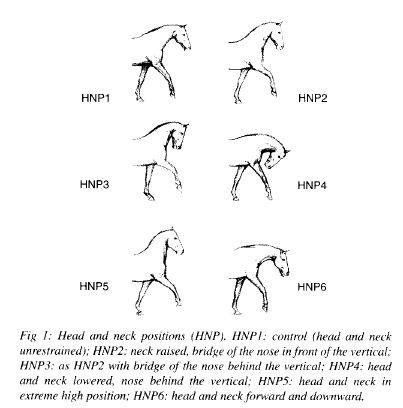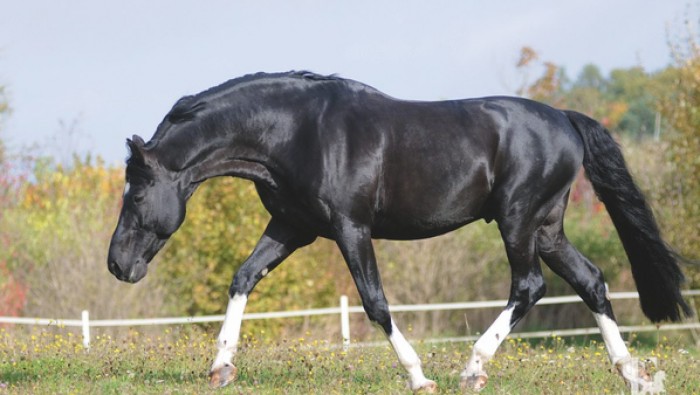
The effect of head and neck positions on the spine.
Different disciplines desire a specific head and/or neck position of the horse, which can be different from the natural posture of the horse. Although there is lots of controversy about this subject, little research is done. This article aims to investigate the effect of different head and neck positions on the thoracolumbar (back) movements of the horse.
Seven high level dressage horses were measured whilst walking and trotting at comfortable speed on a treadmill with the head and neck in six different positions (see image below). HNP1 was the control, HNP2 had a raised neck and bridge of the nose in front of the vertical, HNP3 was similar to HNP2 but with the bridge of the nose behind the vertical, HNP4 had the head and neck lowered and nose behind the vertical, HNP5 had the head and neck in an extremely high position, and HNP6 had the head and neck forwards and downwards.

The results show that head and neck positions have a significant effect on the thoracolumbar movement, namely in the sagittal plane (anatomical plane which divides the body into right and left parts). When the horses head and neck were extended, extension was also found in the anterior thoracic region (at the withers), and when the neck was flexed, flexion was found in the anterior thoracic region. A very high head and neck position was found to disturb the thoracic (under the saddle) kinematics.
Expert opinion by Els Smet
This research shows that the more extreme positions have a larger effect on the kinematics of the thoracolumbar region, but that overall extension of the neck seems to restrict movement more than flexion.
> From: Alvarez et al., Equine Vet J 36 (2006) 445-51. All rights reserved to Research Gate. Click here for the online summary.


